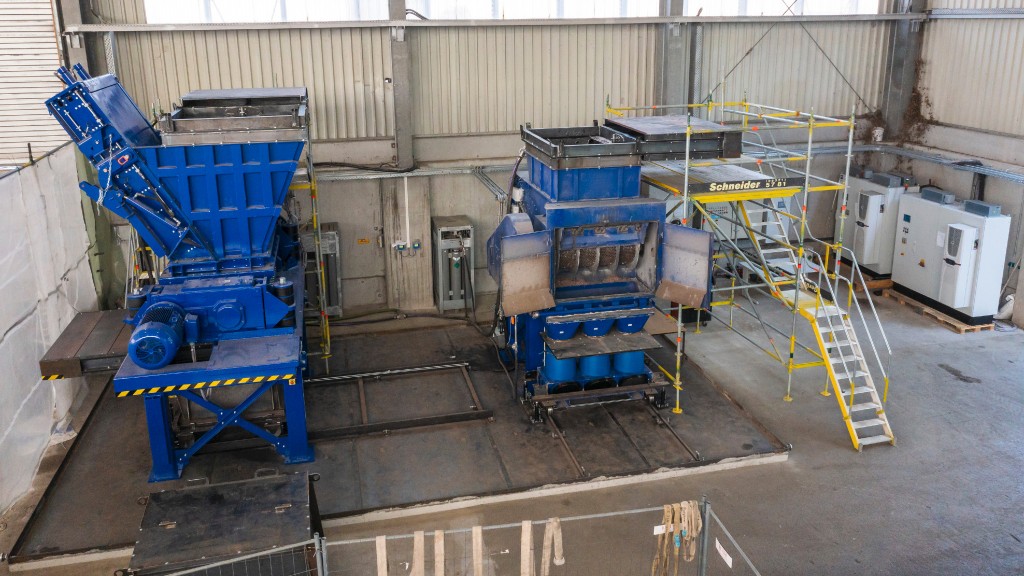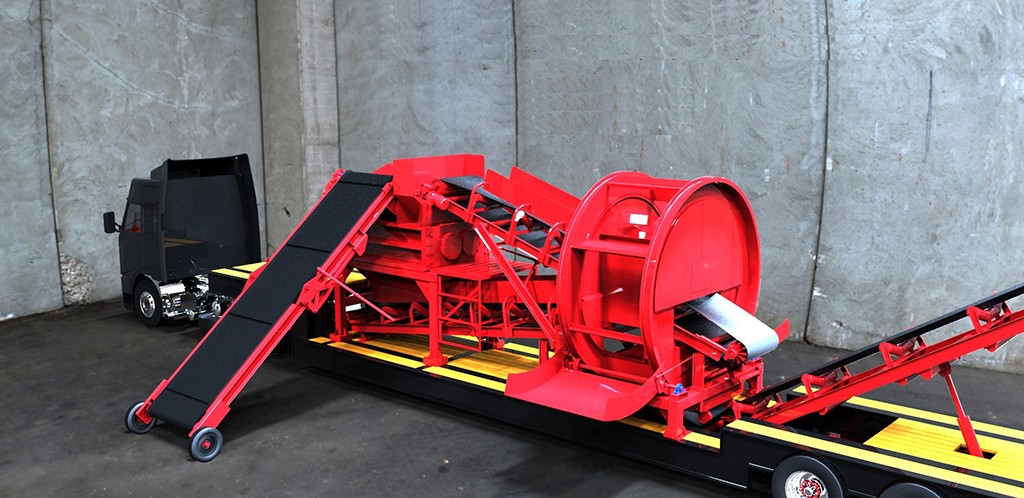New BHS-Sonthofen shredders process hazardous materials in a protective nitrogen atmosphere

BHS-Sonthofen now offers two recycling machines for processing potentially hazardous valuable and waste materials in a protective atmosphere. The universal shredder (type NGU) and the rotary shear (type VR) are the first BHS-Sonthofen in an inertizable, a protective atmosphere, design. The BHS-Sonthofen recycling technology experts have used these two shredders as the basis to develop a new and efficient process in which safety comes first.
Waste materials often contain scarce raw materials that are valuable. Recycling can conserve these resources and close material loops. But what if processing the input materials poses a hazard to people and the environment? Failure to observe these risks may result in fires, explosions, or dangerous gas leaks. In addition, some materials contain hazardous chemicals such as toxic fluoric and sulfuric acids. The vapours of these acids are associated with serious health consequences. One solution is inertizable technology that allows them to be recycled in a protective atmosphere. In order to recycle lithium-ion batteries, BHS-Sonthofen has developed two shredding machines for the first time – the rotary shear of type VR 0912, which is a twin-shaft shredder for pre-shredding larger battery modules and packs, and the universal shredder of type NGU 0513, which is a single-shaft shredder for the second shredding stage with battery cells. Both machines operate in a nitrogen atmosphere during the shredding process.
BHS-Sonthofen's inertizable shredders weigh between 12 and 18 tons, and their new function and size make them unique in the field of industrial recycling.
"The challenge was not to simply just seal the shredders," says Manuel Huber, the designer responsible for the NGU 0513, explaining the change in requirements for the machines, "but also to continue to ensure the flexibility and robustness of the machines during operation and maintenance."
Improved shredder safety with the same functionality
Every screw and component, from the funnel to the hydraulic push-in device to the frame and housing, had to be checked for leaks during the design process.
"By the time we were finished, not a single screw was still in its original place," says Kai Grosch, head of design for shredding technology at BHS-Sonthofen. "Selected components were redesigned as integral welded parts instead of being laboriously bolted together with seals."
This also affects the maintenance of the machines. Instead of replacing wear parts from the outside, as was previously the case, maintenance in contaminated areas is now carried out via an upstream flap.
Increased safety due to special seals
The choice of sealing materials presented a particular challenge. Conventional sealing materials do not provide sufficient protection and resistance to aggressive acids. The engineers at BHS eventually succeeded in finding a promising alternative to the materials commonly used thus far in the form of special sealing materials. High-quality special plastics, which are both resistant to acid and able to bear the weight of the extremely heavy machines, provide the individual composite parts of the design with an additional layer of safety.
Sensors monitor the stability of the nitrogen atmosphere throughout the shredding process. A camera mounted on the rotary shear also enables operators to respond to potentially hazardous situations before they have a chance to develop. In the event of a leak, both machines can be completely flooded with water within a few seconds as a final protective measure. The inertizable shredders offer the same performance and functionality as the proven standard machines, even with all of the modifications.
An opportunity for safer battery recycling
The first step of the recycling process in the protective atmosphere sees the input material fed through a sluice into the sealed area. The BHS rotary shear of type VR handles the pre-shredding process. The standard design of this slow-speed, high-torque twin-shaft shredder uses its interlocking blades to reliably process large objects, from industrial, commercial, household, and bulky waste to elastic input materials such as refuse-derived fuels (RDF), tires, and textiles. The second shredding step sees the universal shredder (NGU), a high-speed single-shaft shredder that reduces the pre-shredded material to the desired final output size.
So far, BHS-Sonthofen has tested the machines specifically for recycling lithium-ion batteries. In principle, they could be used to process a variety of toxic waste and hazardous materials in a protective atmosphere, from shredding-mixing-pumping (SMP) to hazardous chemical waste. To do this, the sealing materials are adapted to the input material should it be required.



